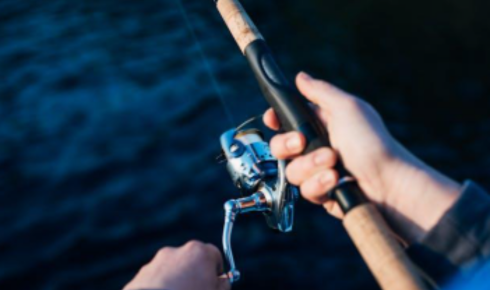5 Tips for Choosing the Right Casting Rod

If you’ve ever walked into a fishing store and felt overwhelmed by the number of rods on the wall, you’re definitely not alone. Choosing the right casting rod can be confusing, especially if you’re just starting out or haven’t fished in a while. You might wonder which rod will help you catch more fish, last longer, or simply feel better in your hands.
But the good news is that picking the right rod doesn’t have to be complicated. If you understand a few key details, you’ll be well on your way to choosing a casting rod that fits your needs, budget, and fishing style.
Know the Basics About Casting Rods
Before you dive into the small details, it helps to understand what castings rods are and why they’re different from spinning rods. Casting rods are built to work with bait casting reels, which offer better control and accuracy, especially for heavier lures and stronger fish. These rods are often used for bass fishing, trolling, or anytime you need more power and precision.
When looking at casting rods, pay attention to the guides (those little rings along the rod), the reel seat (where your reel connects), and the trigger grip, which gives you more control. This rod type isn’t for everyone, but once you get used to it, you’ll likely never go back.
Match the Rod Length to Your Fishing Style
The length of your rod plays a big role in how far and how accurately you can cast. Shorter rods, like those under six feet, are great for close-up fishing or when you’re in tight spaces. Longer rods, closer to eight feet, give you more casting distance, which is helpful in open water.
If you’re mainly fishing from a boat, you might prefer something shorter for better control. If you’re on shore or need to reach far, then a longer rod might be the better option.
Understand Rod Power and Action
Two terms you’ll hear a lot when picking out a casting rod are power and action. Power refers to how much force it takes to bend the rod. A rod with heavy power is stiffer and better for big fish. A rod with light power bends more easily and works best with smaller fish and lighter lures.
Action is about where the rod bends. Fast-action rods bend near the tip, giving you quick control and stronger hook sets. Slow-action rods bend more toward the middle, which can help when you want to cast lighter baits or fight fish more gently.
Choose the Right Material
Casting rods are usually made from graphite, fiberglass, or a mix of both. Graphite rods are lighter and more sensitive, which means you’ll feel bites better. They’re great when you need quick reactions. Fiberglass rods are heavier but more durable and flexible, making them good for big, hard-fighting fish.
A mix of the two materials gives you the best of both worlds—some sensitivity with added strength. If you’re not sure which to pick, starting with a composite rod can be a safe bet.
Think About the Handle Design
You might not think the rod handle matters much, but it does—especially on long fishing days. Handles come in cork, EVA foam, or a combination. Cork is lightweight and gives you a better grip, especially when it’s wet. EVA foam is softer and lasts longer without showing wear.
Also look at the handle length. A longer handle lets you cast with two hands and gives you more power. A shorter handle works well for one-handed casts and tight spaces.


